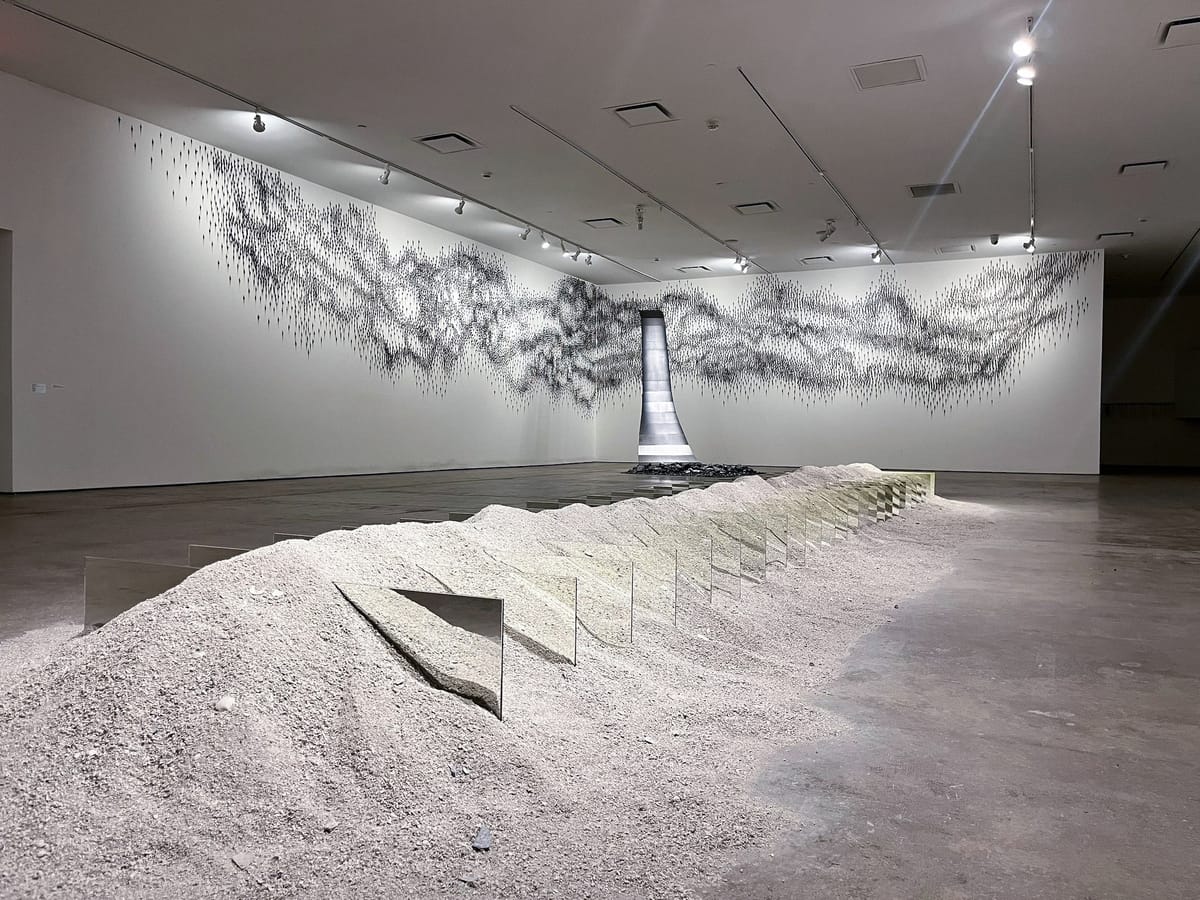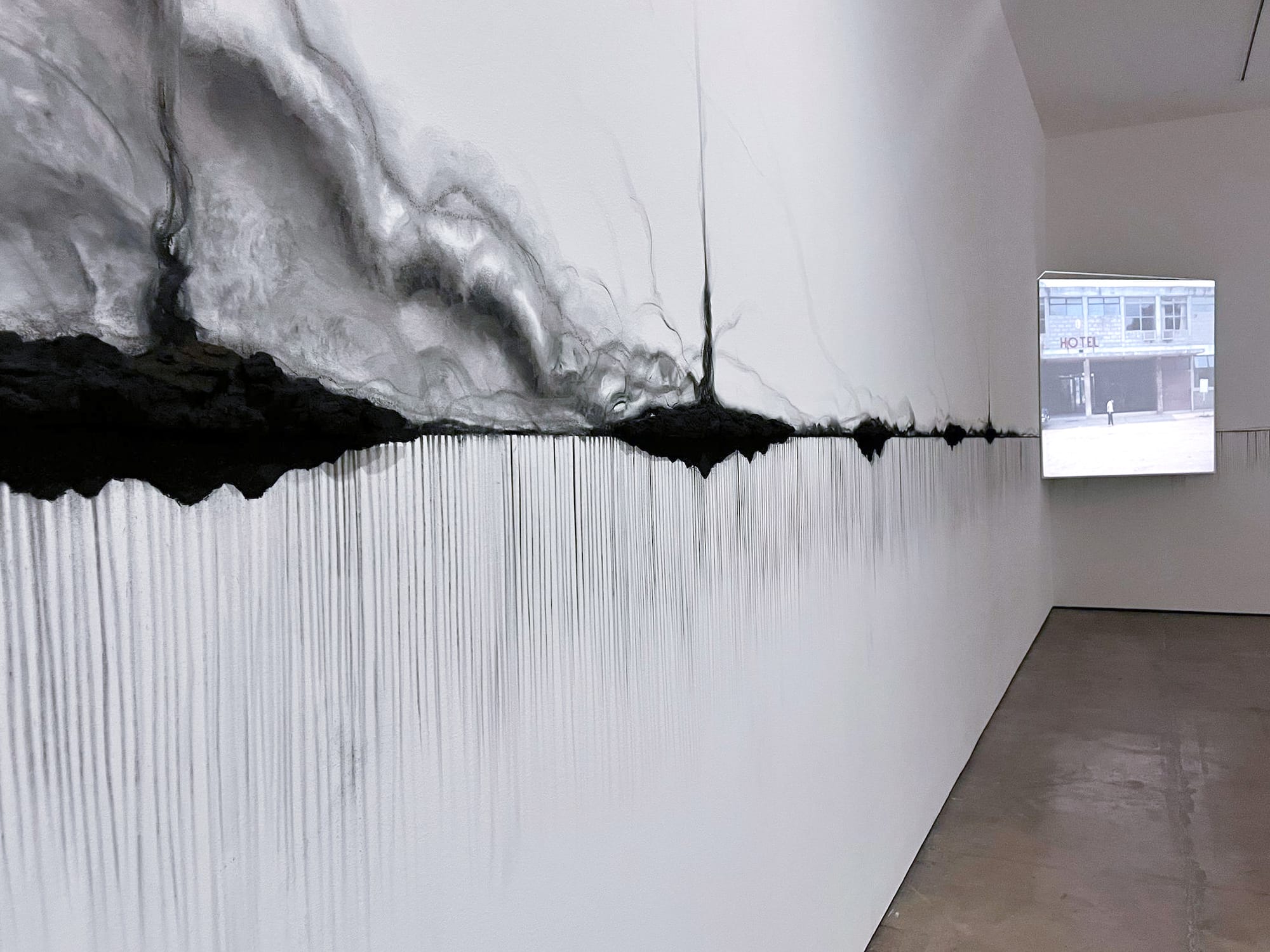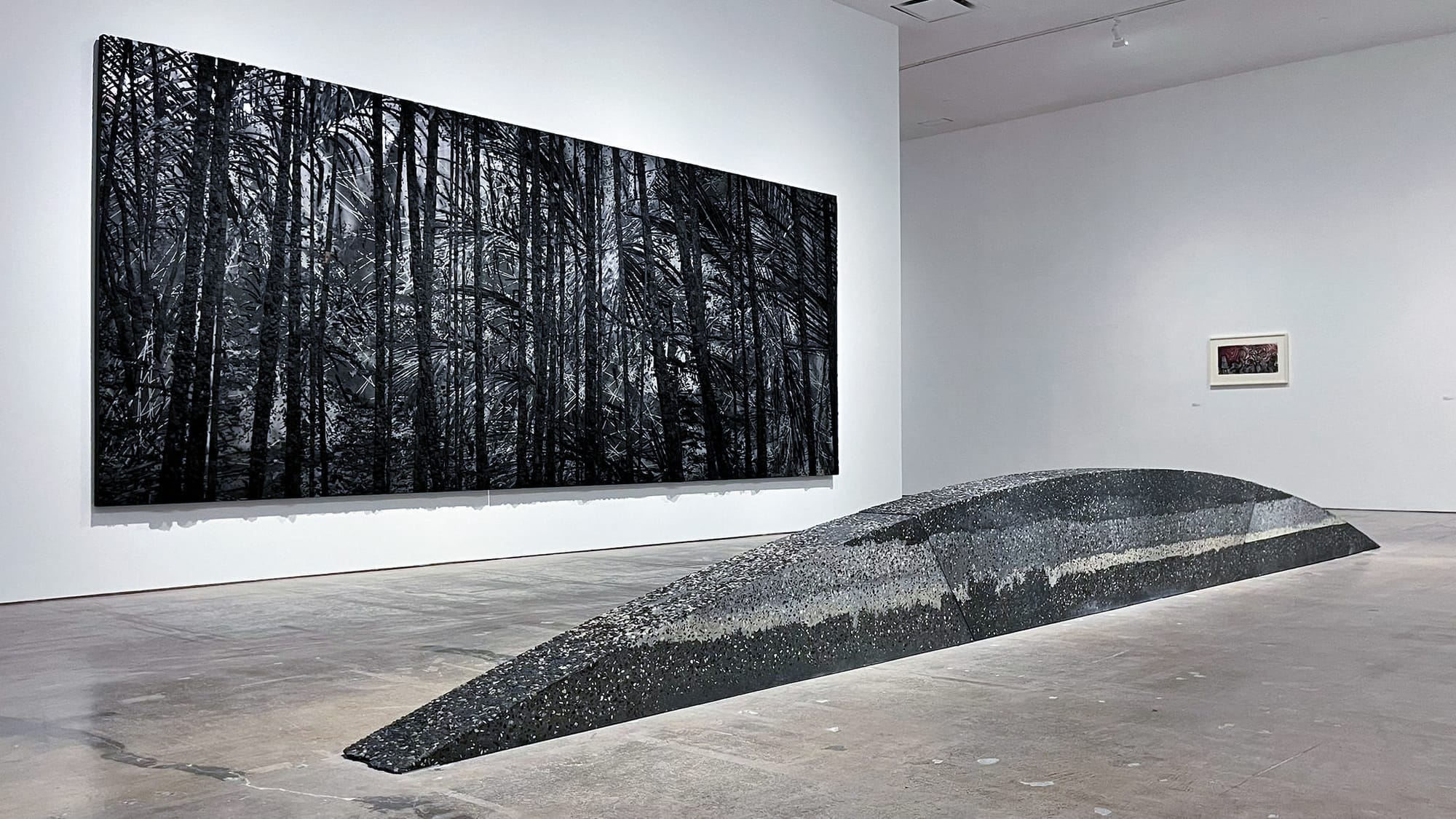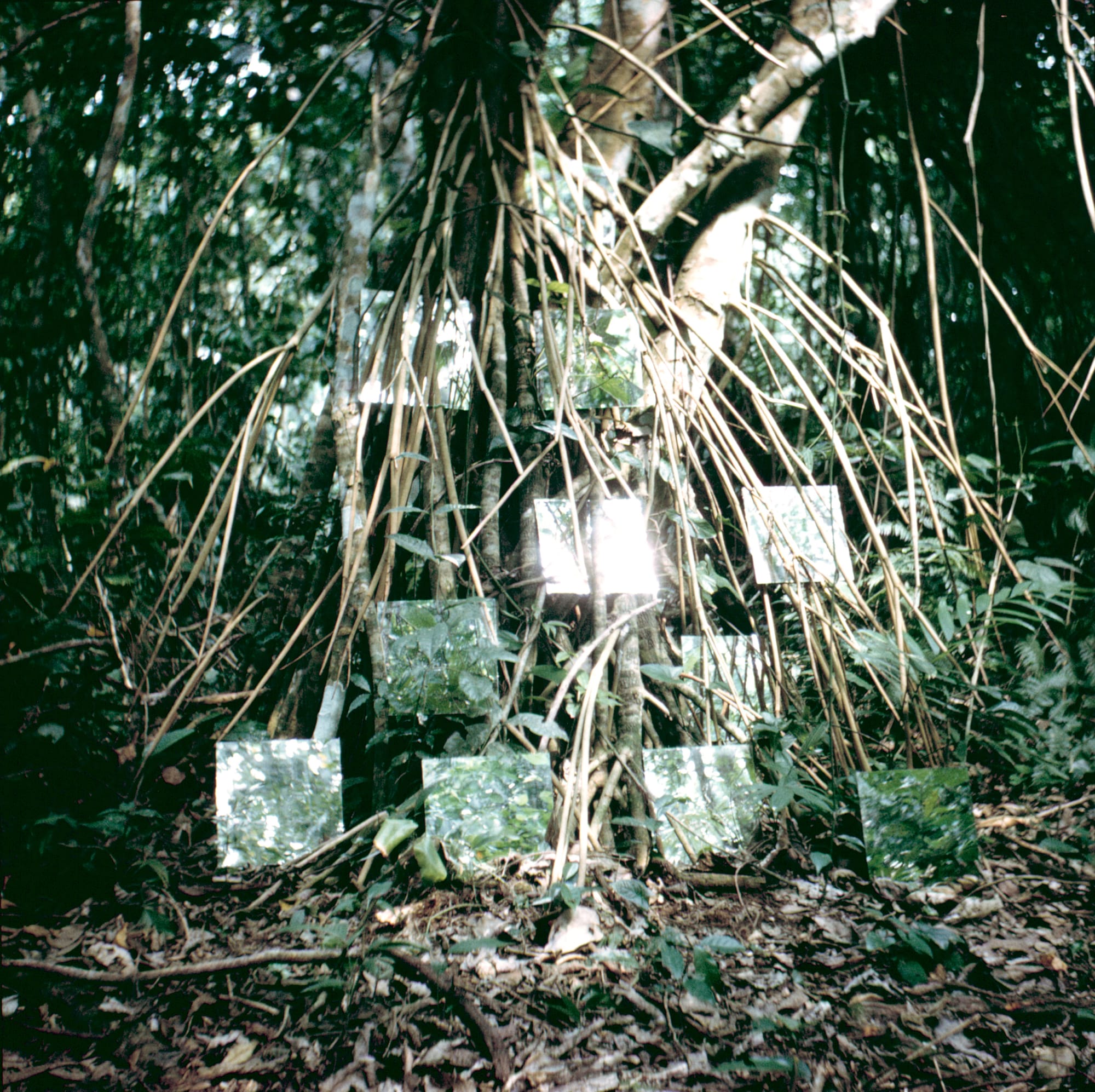Two Artists’ Very Different Places in Nature
The show Teresita Fernández / Robert Smithson traces the ways that the two artists’ sociopolitical positions shaped their perspectives.

SANTA FE — Accompanied by a slideshow of travel photographs, the voice of Robert Smithson looks back on a 1969 trip to Mexico. “There is something about Mexico,” he exclaims, shortly after explaining Mayan agricultural customs, “an overall hidden concealed violence about the landscape itself. […] So you have to be very careful when you go to Mexico so that you are not caught up in this — in any of this kind of unconscious, dangerous violence that is really lurking in every patch of earth.” The slideshow and recording describing this infamous trip compose “Hotel Palenque” (1969–72), part of Teresita Fernández / Robert Smithson at SITE Santa Fe, co-curated by Fernández herself and Lisa Le Feuvre, executive director of the Holt/Smithson Foundation.
Fernández’s “Charred Landscape (America)” (2017) encircles the same room, installed alongside the walls, and traverses the screen upon which Smithson’s pictures are projected. The installation’s abstract charcoal landscape evokes the power of fire as a symbol of Western violence and the use of controlled burnings by Indigenous people in their agriculture.

The dialogue between these two works sets the tone of both the exhibition and the conversation it initiates between the two artists. Their practices overlap in their use of landscape as inspiration and subject matter, and of raw natural materials. Yet the artists’ approaches could not be more different. Fernández emphasizes the way structural power dynamics, such as neocolonialism and cultural and resource extractivism, affect how humans relate to place. In “Manigua (Mirror)” (2023), the entanglement of these geopolitical relationships is characterized by an abundance of tropical fauna. Behind charcoal and black sand, a layer of aluminum faintly reflects the figure of the spectator, inviting us to consider our individual roles in a globalized system. Smithson, on the other hand, evades self-reflection, both figuratively and literally, in his work: in “Yucatan Mirror Displacements” (1969), mirrors reflect nature but the work does not acknowledge the reality of humans' ever-changing and complex interconnection with our environment.
Smithson’s ideas of territory and land ownership are revealed in three small illustrations of islands. In them, the artist places flags over these imaginary plots of land, perpetuating the notion of land as something to be conquered and claimed. In contrast, Fernández’s “Archipielago (Cervix)” (2020) reconfigures parts of the very real geography of the Caribbean islands into the shape of a dilated womb, underscoring land as the initial source of life while alluding to the similarities of the violence historically exerted over women and nature.

Smithson’s failure to position himself within his art and its impact upon nature echoes the colonialist practices that granted him privilege as a White, male artist working in the United States. This alone separates him from Fernández, a Latina woman, but Smithson’s early death means that his practice could not develop as hers could. We don’t know how his art and ideas would have evolved or how he would have reacted to contemporary sociocultural changes.
Fernández has had the time to mature her practice, and as the show’s co-curator, she has studied Smithson’s work deeply. As a result, the exhibition both respects Smithson’s work and traces the ways that the artists’ sociopolitical positions shaped their perspectives. It is important to create spaces where difficult conversations around race, privilege, and power can occur. Teresita Fernández / Robert Smithson does just that.




Teresita Fernández / Robert Smithson continues at SITE Santa Fe (1606 Paseo de Peralta, Santa Fe, New Mexico) through October 28. The exhibition was curated by Teresita Fernández and Holt/Smithson Foundation Executive Director Lisa Le Feuvre.





